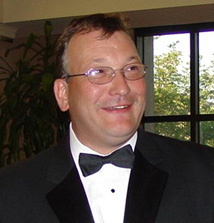
Dr. Heather Caslin
Assistant Professor
Office Number: 104P GAR
Phone: 713.743.9840
Email: hcaslin@central.uh.edu
My research intersects the fields of immunology, metabolism, and exercise physiology. Broadly, I am interested in how immune cells affect systemic metabolism and how cell bioenergetics affect immune cell function. Specifically, I am interested in how different forms of weight gain and weight loss affect innate immune cells and ultimately cardiovascular and immunological diseases. I primarily use murine and cell culture models to identify molecular immune mechanisms, and I am developing new collaborations to help identify the translational nature of these findings in humans.

Dr. Mark Clarke
Associate Professor
Office Number: 104 GAR
Phone: 713.743.9840
Email: mclarke@uh.edu
Research interests are muscle physiology, muscle adaptation to mechanical loading, cellular basis of muscle function in health and disease.

Dr. Emily LaVoy
Associate Professor
Office Number: 135 MEL
Phone: 713-743-0829
Email: eclavoy@central.uh.edu
My research focuses on understanding how physical fitness and exercise impact the immune system. My long-term goal is to understand how physical fitness and exercise can improve diseases and conditions associated with immune dysregulation, such as cancer. I am also interested in how physical fitness and exercise can mitigate the impact of stress on the immune system. My lab answers these research questions using both human and animal models.
I am committed to mentoring future scientists and run an active research laboratory employing undergraduate and graduate students. I am a member of the American College of Sports Medicine, the American Physiological Society, the International Society of Exercise and Immunology, and the PsychoNeuroImmunology Research Society.

Dr. Melissa Markofski
Associate Professor
Office Number: 133 MEL
Phone: 713-743-6658
Email: mmarkofs@central.uh.edu
Dr. Markofski's overarching research question is How do lifestyle factors, such as exercise, encourage healthy aging and reduce disease risk? We know that people who are physically active have a lower risk of chronic diseases and decreased mortality, but what are the mechanisms for this benefit? Dr. Markofski studies the acute and chronic effects of healthy lifestyle activities (exercise, physical activity, and nutrition) on the immune system, skeletal muscle function, and aging. She has a particular interest on exercise, the immune system, and cancer.
Many of the diseases typically associated with aging may not be related to aging per se, but rather age-associated changes in exercise and physical activity, nutrition, and body composition. Consequently, signaling pathways associated with inflammation and metabolism are affected by these changes. The modification of these signaling pathways can lead to an increased risk of chronic disease. Her lab is currently focused on how these factors impact cancer risk and recovery. For example, it is well accepted that the risk for colon cancer is reduced in people who are physically active, but the role of the immune system in this risk reduction is not completely understood.
Dr. Melissa Markofski is an exercise physiologist with a research agenda in exercise immunology. Her current projects encompass healthy research participants, cancer patients and survivors, and health disparities.

Dr. Yoonjung Park
Associate Professor
Office Number: 129 MEL
Phone: 713-743-9350
Email: ypark22@central.uh.edu
Research efforts focus on Exercise/Physical Activity and Cardiovascular Health:
1. To investigate the protective role of physical activity and exercise training in vascular (endothelial) dysfunction in the various pathophysiologic conditions such as obesity, type 2 diabetes, atherosclerosis, aging (Alzheimer), microgravity, etc. in animal and human models.
2. To elucidate the underlying mechanisms in which vascular function is altered by the sequelae of the diseases and physical activity/exercise training at the molecular, cellular, and intact tissue levels using isolated intact microvessels.